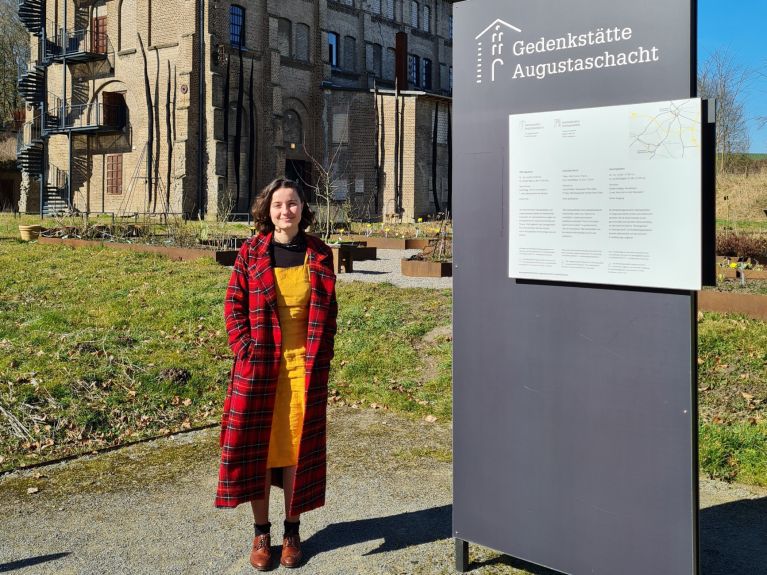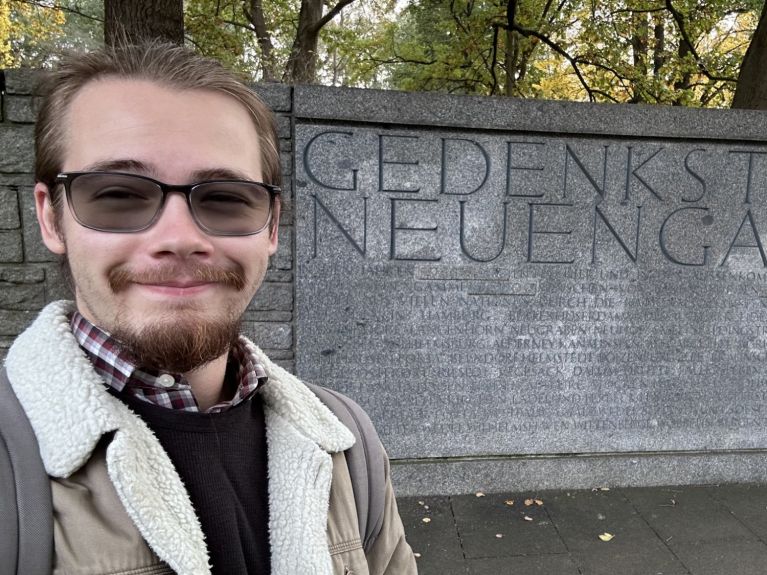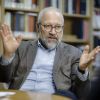Giving Nazi victims a voice
Two international volunteers at “Aktion Sühnezeichen Friedensdienste” tell us about their work in Germany.

Lucie Louis (21) from France is doing her voluntary service for “Aktion Sühnezeichen Friedensdienste” (Action Reconciliation Service for Peace) in the Augustaschacht Memorial Osnabrück from September 2024 until August 2025.

“After my bachelor's programme in humanities and history in Lyon, I really wanted to do some practical work. I found out about the Augustaschacht Osnabrück memorial site, which commemorates the Gestapo (Secret State Police) detention cells and 'labour education camp', through Aktion Sühnezeichen Friedensdienste. Among other things, I work in the archives and in visitor support at the memorial. As a native speaker, I also try to establish contact with the families of former French prisoners. This is also a fight against time and forgetting; often only the grandchildren of the victims of Nazi persecution are still alive. At the beginning of April, I was able to interview an elderly gentleman who was born in captivity as the son of a forced labourer. It was a moving conversation. I think it is very important to remember the suffering of the prisoners and to give them a voice 80 years after the end of the war.”
Gabriel Rogers (25) from the USA is doing his voluntary service for “Aktion Sühnezeichen Friedensdienste” at Neuengamme Concentration Camp Memorial in Hamburg from September 2024 until September 2025.

“My interest in the Second World War period was sparked during my studies at the Ludwig-Maximilians-Universität (LMU) in Munich. Munich was the 'capital of the movement' of the National Socialists, and in my work as a journalist I deal with the danger of the resurgence of right-wing extremism and anti-Semitism. Unfortunately, I also observe this threat in my home state of Michigan in the USA. At the Neuengamme Concentration Camp Memorial, I am primarily responsible for the social media activities of the public relations work. The memorial is breaking new ground in remembrance work with its own TikTok channel. This is important in order to give young people direct access to the memory of the Nazi crimes. I produce the clips for TikTok myself and have already been able to reach over 100,000 people with one video, for example. Valuable personal encounters are also part of my work. I am doing research for a larger film project on Nazi medical experiments on children and have spoken to two Italian cousins who survived the horrors, among others. I am incredibly grateful when people open up and contribute to this important remembrance.”


